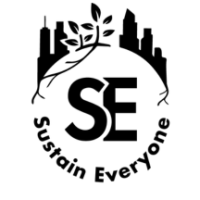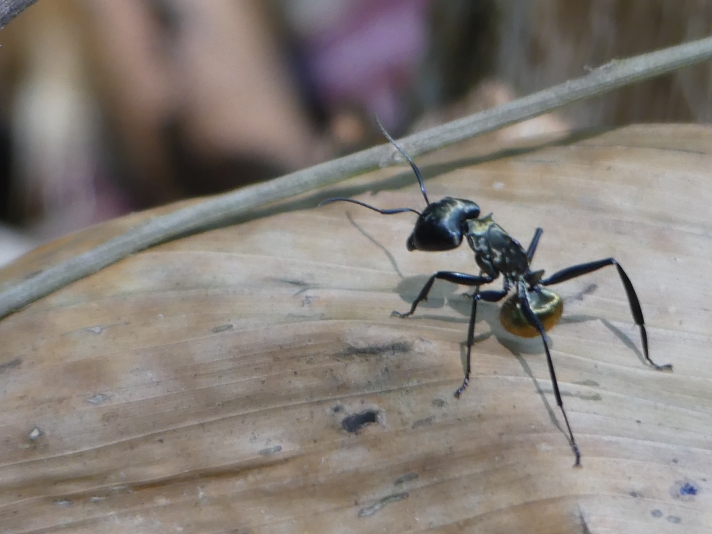Many consider writing to be one of life’s greatest forms of expression. It offers an outlet to portray one’s ideas clearly and effectively to the reader. For almost a year now, I have found pleasure in writing about various topics relating to food and the environment on this blog, Sustainable Future Through Food. I plan to continue doing this in the future, but for the moment I will be focusing my attention on starting and maintaining a new blog called Tres Piedras Ecolodge Reserve. As I am just three weeks into my 6 month long internship in Tres Piedras, Costa Rica, I am realizing the power of blog writing for the outreach goals I laid out in a previous post. Consequently, I will be writing on a new blog page (TPEcolodgeReserve.wordpress.com) to share my experiences living and researching in the wilderness of Tres Piedras, CR. The blog will also serve as a platform for raising awareness for the property where I am doing my research, and eventually it will be available for other researchers, students, professors, and ecotourists to express their feelings, adventures, and experiences here at the Tres Piedras Ecolodge Reserve (TPER).
Here is the first post from the new blog site TPEcolodgeReserve.wordpress.com titled:
Jungle Internship: Tres Piedras Ecolodge Reserve
Often we find ourselves in situations where it is hard or impossible to predict what will be. This condition can easily promote anxiety about our future and what it will bring to us (or what we will bring to it). At the same time, circumstances like this can invoke curiosity and a sense of opportunity. While traveling to Tres Piedras, Costa Rica to complete my last semester research internship of Saint Edwards University’s Professional Science Master’s in Environmental Management and Sustainability, uncertainty and not knowing what to expect became quite familiar to me. Even though I had traveled to Tres Piedras in the past during my Bachelor’s degree (to study tropical ecology for the month of July in 2012, and to volunteer in reforestation efforts for the month July in 2013), I was now going back to the same site to carry out my own independent scientific research project for 6 months in a remote tropical ecosystem with one of my peers, Tessa Rager. The ambiguity of what we were getting ourselves into for the next half of a year was amplified by the fact that my undergraduate university has not traveled to the property for almost three years. Despite all of my uncertainties beforehand and on the journey here, I am extremely content and excited about the prospect of carrying out my research project, as well as helping the new property owner develop an organization that will conserve this (about 150 acre) slice of tropical forest in Tres Piedras, Costa Rica.
As I wrote in a previous post on my other blog site,(SustainableFutureThroughFood.wordpress.com), the property where Tessa and I are conducting our research has an interesting history of students, professors, and environmentalists all using this property over the last 20 years to teach ecology, initiate reforestation in the region, and conduct scientific research studies (among a variety of other projects). Now, a local resident, Maricel, is in charge of the property, and she wants to see this land conserved through the implementation of some sort of ecotourism on the site. This left a lot of room for Tessa and I to brainstorm during out first two weeks here about how to attract ecologically-minded people to this property, which consists of a secondary and primary tropical forest and four cabins on site.
During our first week, Maricel and her family were extremely welcoming and made sure we had everything we needed in the main cabin, which is fully equipped with a kitchen and bathroom. Maricel knew we have our own research projects to carry out and that we are willing to help her with outreach and development of some sort of conservation organization, but I sensed she did not know what to expect from us either. After a few days of adjusting, Maricel, Tessa, and I sat down to find out exactly what would be helpful from us to conserve this land, while at the same time produce some sort of a living to Maricel and her family. This revenue from the property has the potential to keep her, and possibly her family, from having to travel all the way to Dominical (located about 40 minutes by car from Tres Piedras) to clean tourists’ homes.
Thus far, Tessa and I have completed a variety of tasks for the goals we set forth for the property. Before anything, we had to make sure all the trails on the property were cleared of vegetation, as to allow us to move through the forest somewhat easily, to survey the property for ideal sites for our independent research projects, and simply to enjoy hiking in the jungle on our downtime. At the same time, we started a compost pile for our organic food scraps. Our hope is to start building a structure to provide shade for a vegetable and herb garden we would like to create on a part of the property where there is direct sunlight. It is too hot to grow vegetables without some sort of covering for shade, so we plan to use these metal poles that were left on the property by the previous owners and some screen we also found in the shed. Currently, we are working on developing an official website for the property, which we decided to call Tres Piedras Ecolodge Reserve (TPER). The goal is to get the name out there with the intention of providing a place for adventurous travelers to come and enjoy the natural beauty of the tropical forests here. The facilities are already in place, so raising awareness of this place as a spot for ecotourism and attracting people with an interest in this type of experience are our main goals.
One of the major points of interest on the property is the tropical secondary and primary growth forests, both of which are accessible by maintained trails. The forest has a tremendous amount of biodiversity, which makes it ideal for ecotourists, birdwatchers, ecologists, researchers, environmentalists, and anyone else interested in spending time the natural world away from the distractions of big cities. The surrounding village of Tres Piedras is mostly agricultural land, making the property we are living on even more special and more important ecologically. If we can bridge the gap between the current environmental benefits of the forested land at TPER and the potential for socioeconomic benefits to the local residents through ecotourism, there is a huge opportunity to conserve this ecologically sensitive ecosystem.
Moreover, getting here was quite hard without a car, as Tessa and I realized when we decided to venture into the nearest city of San Isidro en General. For this reason, Maricel’s brother offered to pick us up when we arrived on our first day with our heavy backpacking backpacks. To get to the city from Tres Piedras, we have to walk one hour catch the 6am bus at the closest community of San Juan de Dios. Then it is about a 45 minute bus ride until you arrive in the small city of San Isidro en General. Since the bus from San Juan de Dios to San Isidro en General only runs on Mondays and Fridays, we stayed overnight on a farm close to San Isidro to get some rest and visit Tessa’s boyfriend, Victor. He is working and learning about agriculture in the tropics at Finca Armata. The next morning we caught the bus to Platanillo, which is about a three hour walk to Tres Piedras (on a Tuesday when the bus does not run to San Juan de Dios). Luckily there were two people who drove us the majority of the way when they saw us walking along the dirt road. One fact about Costa Rica that becomes particularly noticeable when traveling by foot is that the land is rarely flat because the country is dominated by mountainous terrain. It may sound like a lot of work to get here without a car, but for me the cost in energy is rewarded ten-fold when I return to such a secluded and peaceful tropical environment (though it would be nice to have a car of some sort).
Despite the anxiety and uncertainty clouding my thinking on my journey here, the opportunities that are available to me here at Tres Piedras Ecolodge Reserve are more than enough to keep me busy for 6 months. In addition to quantifying and comparing the biomass (or trapped carbon) in the secondary and primary forests on the property, I will be working closely with Tessa and Maricel to attract visitors to the region through ecotourism in an attempt to conserve the land and create socioeconomic benefits for Maricel and her family.
If you are interested in seeing photos of the site and learning more about us, like us on Facebook “Tres Piedras Ecolodge Reserve” and follow us on Instagram “Tres_Piedras_Ecolodge. Once the website is complete I will update this blog post. Also, follow my new blog page TPEcolodgeReserve.wordpress.com



